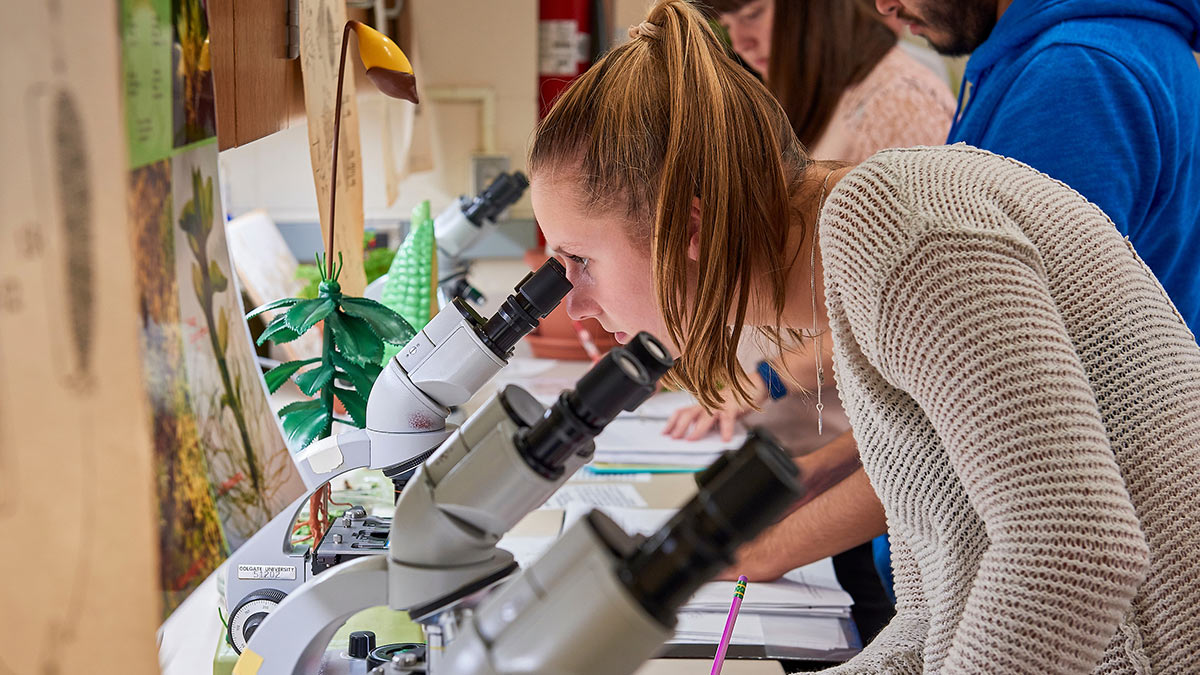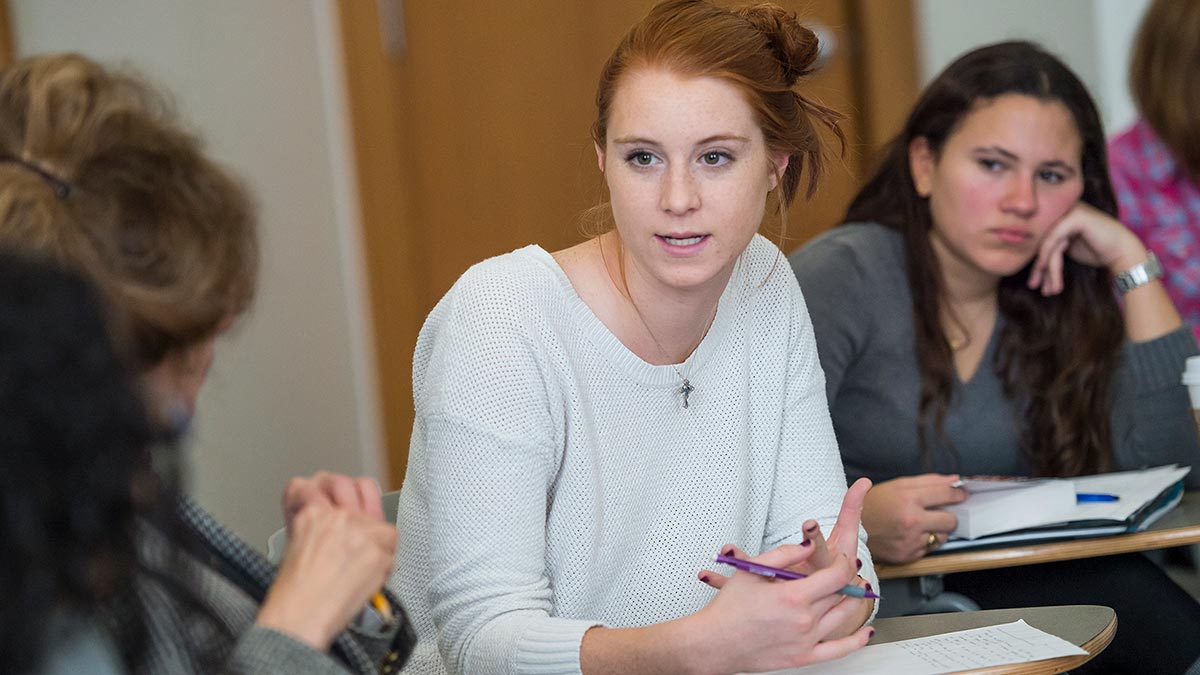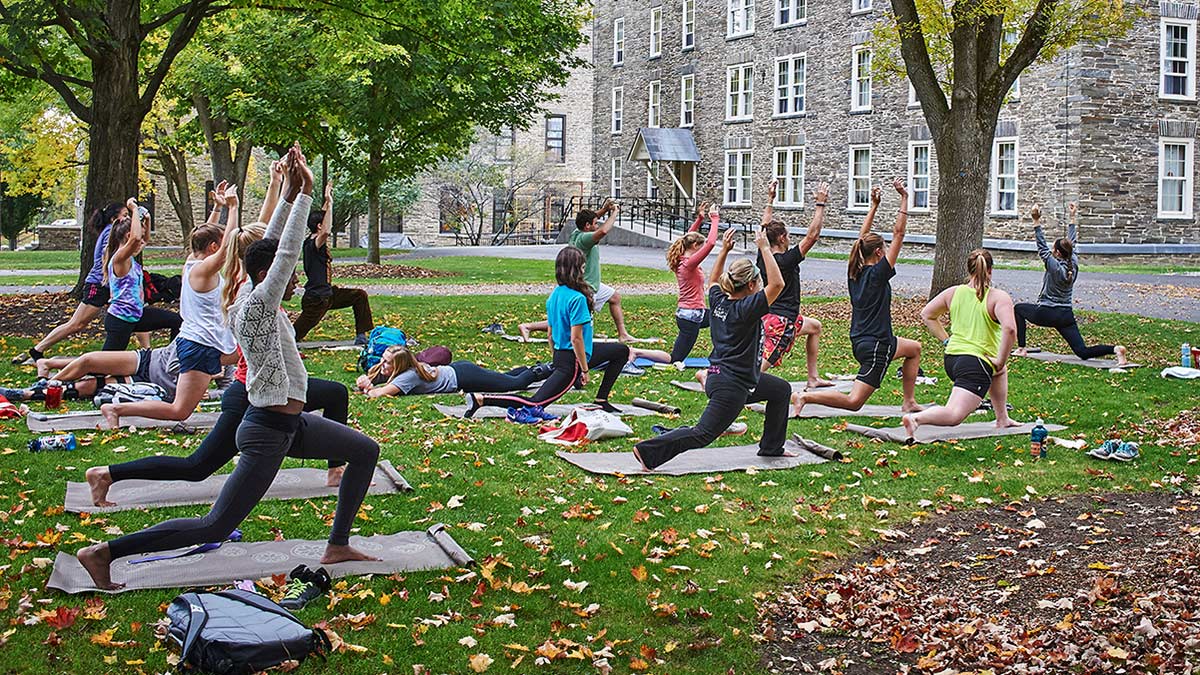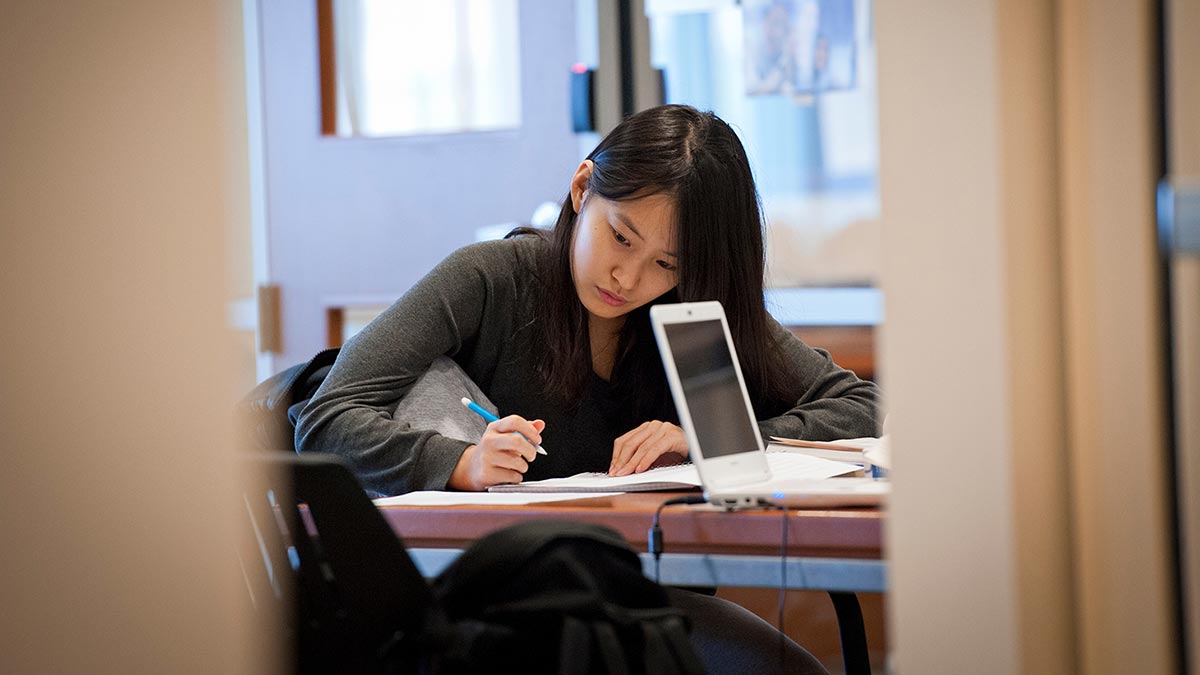

Colgate at 200 Years — Fundamentals for Colgate's Future
On the verge of entering its third century, Colgate is a distinctive, strong national institution. It is one of the most important undergraduate universities in the nation, if not the world. Its history has created unique characteristics for the university, and its intangible qualities make it appealing for leading students, faculty, and staff. It thus looks toward to its third century with enormous possibility. Our task now is to understand these characteristics and history, and to push the institution to new heights. This will be achieved to the extent we are focused on the following fundamentals for Colgate’s future and are committed to being one of a handful of leading undergraduate universities in the nation and the world.
Building and Supporting a Culture of Intellectual Rigor
The first foundation upon which Colgate’s future rests will be the extent to which we continuously strengthen the intellectual reach and impact of the university and nurture a culture in which intellectual rigor marks all of our endeavors.
Simply put, to attract students of the highest potential, faculty of the highest regard, and staff who are leaders in their fields, Colgate must be known — even more than it is today — as an academic institution committed to intellectual rigor. This lies at the heart of the university’s mission and is essential to Colgate’s future.
Colgate needs to focus on building and maintaining a top-tier faculty. Supporting the creation of knowledge and its dissemination through teaching, publication, and public engagement requires significant focus. Colgate must also create and support a curriculum that is relevant and challenging.
Some believe there is a trade-off between faculty members who are productive scholars at the forefront of their fields and faculty members who are good, supportive teachers and community members. At Colgate, we would not be true to our institutional ethos if we accepted this position. The high-quality liberal arts education that we will offer to future generations of students must be built upon lively and active scholars who bring new ideas and perspectives into the classroom and transform students with their own enthusiasm for their work.


Related to this, we must introduce our students to the challenges and power of rigorous, academic discourse. In an era of heated rhetoric and political divisions in which shouting is prized, we will give our graduates a profound gift should they leave the campus with the power to summon reason, to gather facts, and to engage in a discourse that is sound, fair, and powerful. Through those tools, we will send into the world the next generation of Colgate graduates able to shape our world as accomplished, empathetic leaders.
An equally important part of the academic environment at Colgate is the student culture we build on campus. While our students are at Colgate, we must ensure that they contribute to an academically dynamic community. Colgate professors should be as enlivened and motivated by the interests, passions, and skills of our students as our students are inspired by our faculty. We need to cultivate a student body that leads to our reputation as a great place to teach and pursue one’s academic interests because of the engagement and skill of the students.
In sum, Colgate must be known as an academic institution committed to intellectual rigor, an academic institution of the first order, an undergraduate university distinguished by a world-caliber faculty engaged in rigorous scholarship, and a university whose students demonstrate the habits of thoughtful intellectual engagement. To accept anything less than this would be to deny the arc of the long trajectory of Colgate’s history.


Attracting Outstanding Students
A university is, at its most essential, the product of the people it attracts. Talented students, a leading faculty, and professional staff all must be in place on the campus should Colgate wish to be consistently regarded as among the finest colleges and universities in the nation.
In the arena of admissions, Colgate faces an ever-increasing challenge: how to attract and enroll students of profound promise and achievement when faced with increased costs of attendance. Colgate has long relied on the enrollment of a sizeable portion of the entering class who can meet the fully stated price of a Colgate education. While this will remain true for the foreseeable future, Colgate must seek additional funds to make its education available to all those who will bring energy, intelligence, and talent to the campus.

A university is, at its most essential, the product of the people it attracts.”
Colgate must also seek a student body from a wider geographic footprint, one that shows the university attracting students from all corners of the nation and the world. And, of course, Colgate must attract a student body that reflects the vibrant diversity of our nation.
If we aspire to greatness, we cannot compromise our efforts on this point. In America today, a great institution is a diverse institution. It is one that brings students of different socioeconomic backgrounds, races and ethnicities, and religions to campus. There are myriad reasons for this to be a priority, not least of which is our obligation to the broader American community in which we have been permitted to prosper. But beyond any responsibilities we might feel to the commonweal, or principles by which we might be motivated, is the simple acknowledgment that an education today is a poor thing if it does not include firsthand engagement with a wide range of perspectives and experiences. We simply cannot claim to be a first-tier institution providing a first-tier education to our students if we do not expose them to a rich diversity of perspectives and backgrounds in their educational and social experiences.
Creating and Nurturing a Community Marked by Affection, Ritual, and Pride
Colgate possesses remarkably proud and loyal alumni who, while at Colgate, developed strikingly strong bonds to each other and to their alma mater. These connections — these bonds of affection — have proved to be sustaining for Colgate graduates and a significant source of strength for the university over many decades. For our alumni, the ways in which they built their connections proved to be a valuable and profound complement to their classroom learning.
Of course, times have changed and many of the social patterns of the Colgate community continue to evolve. As it enters its third century, Colgate must overtly and explicitly seek to create a deep, clear, and compelling campus culture — nurtured and expressed through our residential programs, our athletics program and other student activities, our ceremonies and traditions, and through the overall campus experience. This must be a campus culture that fosters bonds among members of the community and connects, in a meaningful and sustained way, students, faculty, and staff to the institution itself. Our students and faculty hunger for this. And Colgate’s long-term vitality requires this.


It may seem that undertaking overt efforts to nurture loyalty, pride, or affection is hopelessly retrograde. It is not. It may seem that to call for development of community must come at the expense of individual development. It does not. When authentic and based on genuine experience, a shared culture can be a source of considerable energy and spirit for any institution. Through these efforts, all will feel included in a greater project that animates the university. They will belong to, and with, Colgate.
Much of this is connected to the residential and social life of the campus. Colgate has long offered an extremely wide range of residential options, unusual among the liberal arts colleges. The Colgate residential inventory includes traditional residence halls (e.g., Andrews and Stillman halls), a small number of multiunit residential complexes (e.g., Bryan Complex and 113 Broad Street), numerous quasi-independent townhouses and apartments, Broad Street theme houses, and fraternities and sororities. This complexity allows students to forge their own paths, yet it also tends to divide the campus and creates systems in which there might appear to be social-residential “winners” and “losers.” From a residential and social perspective, Colgate — long a place marked by community and bonding — can often feel divided.
Colgate needs to develop long-term programs to enhance the quality of student housing and the overall quality of student life. Further, Colgate should ensure that all students belong to the university and that they share this institutional bond while they are also developing those more individual social bonds that sustain them.


It is important to state here that it is not the role of the administration to engineer all relationships built across our campus. We need to acknowledge that the character building and maturing that occurs at Colgate occurs most often in informal ways — between students and faculty, between students and students, and, indeed, between students and the surrounding Hamilton community. The role of the administration is to ensure that settings and contexts exist to facilitate such encounters, and that all students who come to Colgate have equal opportunities to enjoy the social dynamics of our institution and be included in all its gifts and opportunities. This involves building out meeting places, living spaces, and social spaces that give outlet to our students’ innate social tendencies.
There is one additional, deeply important consideration when speaking of these matters. It is clear today that the future of this country will belong to those who are culturally dexterous. To be culturally dexterous is to be able to navigate across diverse cultural perspectives with authenticity and skill. We would be doing a disservice to our students, and would relinquish our standing as a leading American institution of higher education, if we did not take seriously our charge to enhance our students’ cultural understanding and adroitness. These are qualities that depend not only upon the classroom but on what happens in our residence halls and social spaces. It depends upon friendships and authentic intimate contacts between students of different backgrounds, cultures, and belief systems.
In short, Colgate should take overt steps to nurture a culture where bonds of community are developed and where one develops a sense of institutional pride. These ties should be nurtured and expressed through our residential programs, our athletics program, our ceremonies and traditions, and through the overall experience of the campus.
Sustaining and Improving a Campus of Striking Beauty
Finally, Colgate must carefully steward one of its most precious assets: the beauty of its campus. The experience of the place that is Colgate has shaped the lives of students, faculty, and staff for generations. Ensuring that this beauty is sensitively enhanced and passed on to future generations must remain a university priority.
When graduates from the 1960s and 1970s return to the Colgate campus, they hardly recognize it because there has been such significant building and improvements made. Predictably, there will be more. However, when such buildings and improvements take place, we must ensure that the basic relationship of the campus to the nature that surrounds it, and the group of buildings that define Colgate, are not degraded. We should never let progress detract from that beauty but must be supremely sensitive to the marvels of the place.
We also must make sure that the environs of Colgate and Hamilton provide for our faculty, staff, and students a comfortable as well as engaging place to reside. The livability of the campus and the village will serve Colgate as it will allow us not only to attract leading faculty and students, but will also allow them to work and live in a place that is engaging, connecting, and amenable.



